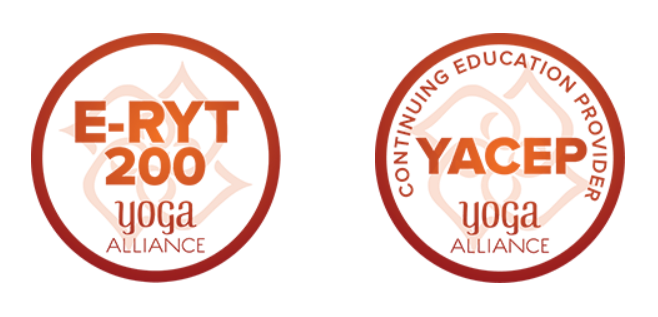
Course Description
What is Rājayoga and how does it relate to Haṭhayoga? What are the traditional practices of Rājayoga? And what are its goals of liberation?
This course will delve into premodern traditions of Rājayoga—the practice of meditative absorption that became an inseparable counterpart to physical yoga, more generally known as Haṭhayoga. Yogis learned physical yoga to accomplish meditative absorption (rājayoga), which was supposed to result in liberation from worldly suffering. Historical textual sources on Rājayoga contain insights into the practice of meditation, the purpose of physical yoga and how postures (āsana), breath retentions (prāṇāyāma), and internal muscular locks and seals called bandhas and mudrās, were combined to achieve meditative absorption quickly and effectively.
Dr. Jason Birch will provide a general overview of the history of Haṭha- and Rājayoga, as well as read and discuss translations of several unpublished Sanskrit Rājayoga texts. At the end of the course, students will know the various meanings of the word rājayoga in diverse historical contexts, and understand the continuities and discontinuities between different traditions of yoga, including Patañjali’s Yogasūtras. Moreover, this course will provide insight into premodern ideas on the benefits of Rājayoga and the liberation (mokṣa) that is supposed to arise from it.
"Embodied Philology"
A unique component of the course will be two interactive, practical sessions led by Jacqueline Hargreaves. In these sessions students will explore the methods of absorption that are designed to move the practitioner towards the state of stainless perfection. Inspired by the teachings of samādhi (a synonym for rājayoga) in the Gheraṇḍasaṃhitā (an early 18th century text), premodern meditation techniques will be practised that are said to perfect both body and mind in order to achieve the goal of Rājayoga, which is liberation-in-life.

Course Modules
Module 1 — The Early History of Rājayoga
Module 2 — Haṭha and Rājayoga
Module 3 — Rājayoga and Liberation in Life (jīvanmukti)
Module 4 — Reinterpretations of Rājayoga in the Early Modern Period
Students Will Receive:
- 4 Pre-recorded Video + Audio lectures (90 min)
- 2 Pre-recorded practice sessions (20-30 min)
- 4 Pre-recorded Q&A sessions (90 min)
- 4 ACP Credits
- 12 Hours of CE credit with YA
- Course Syllabus (PDF)
- Weekly Readings (PDF)
- 4 Multiple Choice Quizzes
- Yogic Studies Certificate (PDF)
- Access to the private Community Forum
Dr. Jason Birch
Senior Research Fellow, SOAS University of London
Jason Birch (DPhil, Oxon) is a senior research fellow for the ‘Light on Hatha Yoga’ project, hosted at SOAS University of London and the University of Marburg. He is also a visiting researcher on the Suśruta Project at the University of Alberta. He is well known for his important paper on the meaning of haṭha in early Haṭhayoga, which has reshaped our understanding of the origins of this term by locating it within Buddhist literature. His dissertation focused on a seminal Rājayoga text called the Amanaska. Through extensive fieldwork in India and the reconstruction of primary sources, Birch has identified the earliest text to teach a system of Haṭhayoga and Rājayoga, namely the twelfth-century Amaraugha. His most recent publication has defined a corpus of Sanskrit and vernacular texts that emerged during Haṭhayoga's floruit, the period in which it thrived on the eve of colonialism.
Jason has published articles in academic journals and critically edited and translated six texts on Haṭhayoga for the Haṭha Yoga Project 2015–2020; taught Masters courses and Sanskrit reading classes at SOAS and given seminars on the history of yoga for MA programs at the Università Ca’ Foscari in Venice, Won Kwang University in South Korea and Loyola Marymount University, Los Angeles. He is a founding member of the Centre of Yoga Studies SOAS and the Journal of Yoga Studies, and combines his practical experience of yoga with academic knowledge of its history to teach online courses with Jacqueline Hargreaves on The Luminescent.
Jacqueline Hargreaves
Program Manager, SOAS Centre of Yogic Studies and SOAS Yoga Studies Online
Jacqueline Hargreaves is an Engineer, senior Yoga Teacher, and independent researcher who examines the contemporary meeting place between historical Yoga practices and their application in the modern world. She is a founding member of the Journal of Yoga Studies, a peer-reviewed academic journal, and the co-founder of The Luminescent, an independent open-access educational platform for publishing cutting-edge, original research from primary sources. She has traveled throughout India for fieldwork into the origins of Haṭhayoga and studied meditation extensively, including mindfulness-based meditation (MBCT and MBSR) and intensive Zen practice in a remote part of Japan.
Hargreaves collaborates with scholars, artists, and scientists to communicate research on both premodern and modern facets of Yoga. Most recently, she curated the exhibition Embodied Liberation I and II at the Brunei Gallery in London for the Hatha Yoga Project (SOAS University of London). In collaboration with the AyurYog Project (University of Vienna), she curated the Untangling Traditions series and designed a web-based visual and interactive timeline for premodern yoga and Āyurveda.
Hargreaves is currently producing a documentary film, which aims to bring to life the unique content of the postural practice preserved in an eighteenth-century Sanskrit yoga text, Haṭhābhyāsapaddhati, through a visual reconstruction of its extraordinary section on āsana.
This course is eligible for 12 hours of Continued Education (CE) credits with Yoga Alliance

Stay Informed
Sign up for the Yogic Studies mailing list to find out first about upcoming courses, podcast episodes, promotions, events, and the latest research delivered straight to your inbox.



